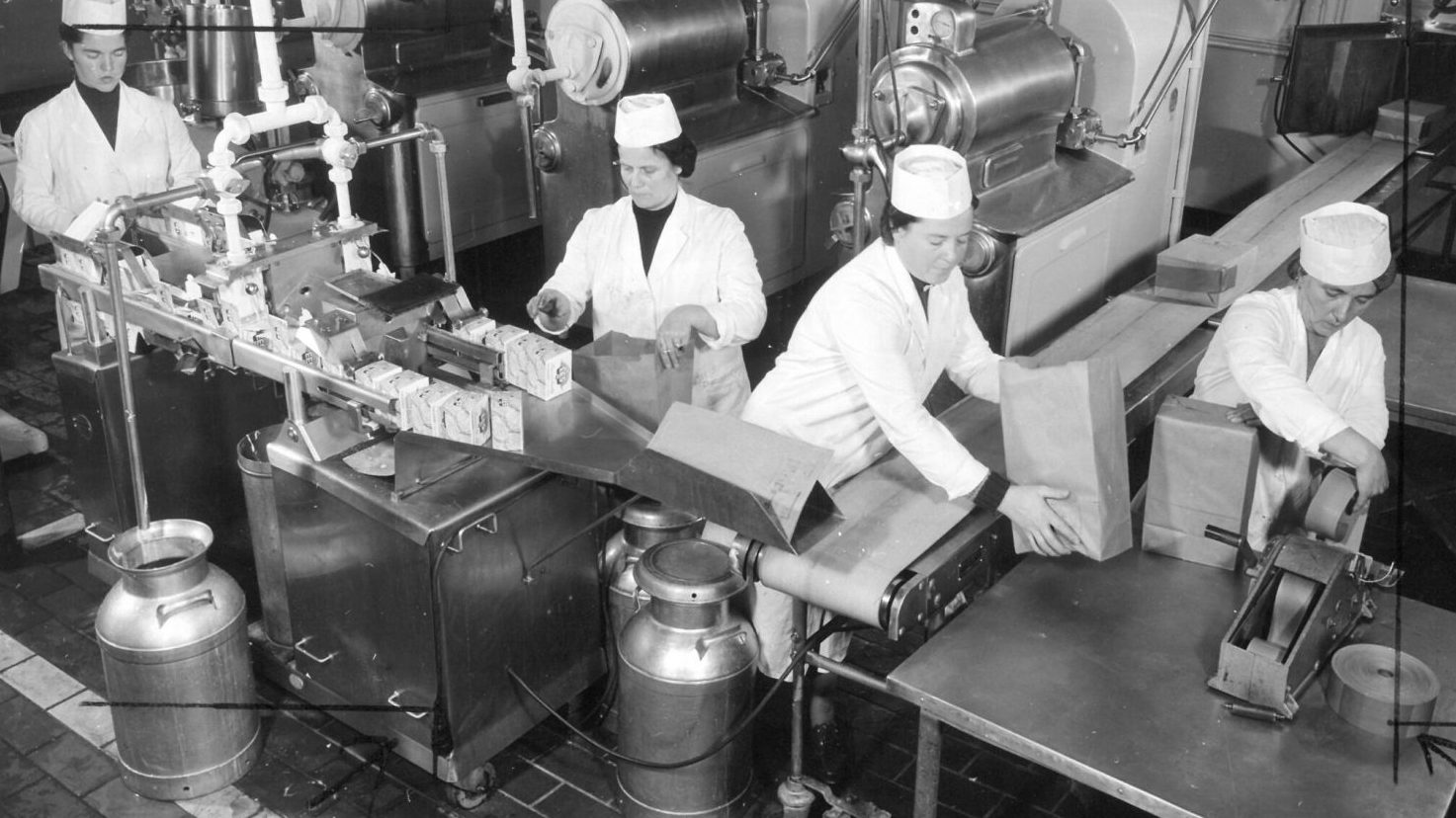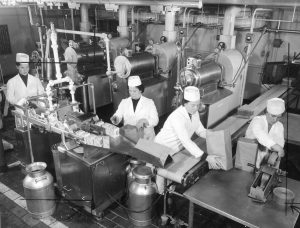#FlashbackFriday: The Rocky Road Toward Opening an Exchange Ice Cream Plant in Europe

With National Ice Cream Day coming up July 17, #FlashbackFriday flashes back to an overseas scoop of Exchange ice cream history.

The Gruenstadt ice cream plant in a 1950s photo.
In 1957, a giant ice cream plant run by the European Exchange Service (EES) in Gruenstadt, Germany, completed its first year of operations. Production was set at an annual rate of 3.5 million gallons of ice cream, prompted by service members’ desire for a taste of home.
By early 1958, the plant manufactured and distributed all the ice cream for Army and Air Force units in Germany and France, and part of the supply for units in Italy. The plant replaced smaller, decentralized locations that supplied U.S. military members in those areas.
The plant also supplied snack bars and delis operated by EES and by the Air Forces Europe Exchange (AFEX), as well as quartermaster-run commissaries.
The opening of the plant was the climax of a long journey. After World War II, Soldiers and Airmen stationed in Europe wanted the stateside-style ice cream that was being made at numerous European small plants, which were making small-batch ice cream with materials shipped from the United States. But it was difficult to avoid overstocking the materials, which led to flavor losses over time.
Locally hired employees had to adapt to American manufacturing techniques, production cost per gallon was high and proper equipment maintenance was difficult.
In 1949, the Quartermaster Corps began a trend toward centralization when it opened a large plant in Frankfurt and closed most of its smaller facilities. EES also began closing smaller plants and developed a European-based source for the ice cream mix.
By 1955, EES had large plants in Frankfurt, Munich and Nurnberg, with smaller plants in Berlin and Bremerhaven. But the demand for ice cream grew to a point that it was clear that facilities would have to be expanded and modernized to meet safety standards and reduce operating costs.
There were also issues with finding a location for a central plant, as well as with freight cost, storage space, proper refrigeration, packaging and more. As these issues were resolved, all the remaining small plants were shut down by September 1956, and the new central facility began production using equipment from the smaller plants. Other equipment was installed by May 1, 1956, in time for the summer ice cream season.
The plant mainly produced chocolate, vanilla and strawberry ice cream, rotating a fourth flavor each month. It also produced ice cream pops, chocolate-covered vanilla ice-cream bars made on an automatic stick machine consisting of a revolving circular metal mold about 15 feet in diameter.
The ice cream was a hit with U.S. military members and was considered a major factor in keeping troop morale high.
In 1971, the plant underwent a $250,000 renovation to improve production efficiency. The plant eventually added Neapolitan, cherry vanilla, chocolate chip, butter pecan and other flavors as well as more novelty items. In 1978, the plant began producing six seasonal flavors a year, including piña colada, pecan pie and peppermint candy. But vanilla was still the top-selling flavor, followed closely by chocolate.
The Exchange no longer operates ice cream plants, but does operate the Gruenstadt bakery, which supplies name-brand breads and other goods to installation dining halls, Exchange restaurants, Department of Defense schools, commissaries and other organizations.
Sources: Exchange Post archives, Exchange History Flickr.


I’m curious. Did the Exchange sell the plants and are they still in operation after all these years?
Hi, Gayle. Afraid I don’t know the answer to that off the top of my head, other than the Gruenstadt ice cream plant is closed. Let me see what else I can track down.
Robert Philpot
The Exchange Post.
Hi Gayle, the plant is not sold. The production of Ice Cream stopped somewhere between 2005 and 2008 though, if I recall correctly. To the last of my knowledge, it would have needed excessive upgrades, which were deemed too expensive at the time. Now, Ice Cream is shipped in frozen from the USA.